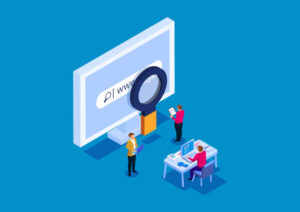How To COMPLETELY RECOVER Your Lost SEO Traffic

COMPLETELY RECOVER Your Lost SEO Traffic- I want you to verify the URL displayed on this screen. It’s an indicator of penalties. Therefore, you can visit that URL to determine if your traffic loss is due to a Google algorithm update. In addition, I would like you to examine the Google search console for a manual penalty. Because if you have a manual penalty and they tell you why, you must also address this.
Also Read:- 8 Ways to Increase Your Website Traffic FAST and FOR FREE
Now, if you experience a drop in traffic due to a specific algorithm update, that does not inherently indicate a penalty, correct? It simply means that Google has just set its algorithm so that sometimes you will gain more traffic, sometimes you will lose traffic, and sometimes your traffic will remain roughly constant.
Here’s a step-by-step guide to help you completely recover your lost SEO traffic:
- Identify The Issue:
- Check Google Search Console: Look for any manual actions, security issues, or crawl errors.
- Analyze Traffic Drop: Use analytics tools to pinpoint when the drop began. Was it sudden or gradual?
- Determine If There Was A Google Algorithm Update:
- Stay updated with industry news. Websites like Moz, Search Engine Land, and SEMrush provide updates on Google’s algorithm changes.
- If your drop aligns with an update, understand the nature of that update and adapt accordingly.
- Technical SEO Check:
- Site Speed: Make sure your website loads quickly.
- Mobile Optimization: Ensure your site is mobile-friendly.
- HTTPS: Make sure you’ve migrated to HTTPS and done it correctly.
- Broken Links: Use tools like Screaming Frog or Ahrefs to check for and fix broken links.
- Robots.txt & XML Sitemaps: Ensure they’re set up correctly.
- Content Analysis:
- Quality: Ensure your content is high-quality, updated, and provides value.
- Keyword Cannibalization: Make sure multiple pages aren’t targeting the same keyword.
- Internal Linking: Ensure there’s a logical structure and that crucial pages are easily accessible.
- Backlink Analysis:
- Lost Links: Use tools like Ahrefs or SEMrush to see if you’ve lost any significant backlinks.
- Toxic Links: Check for any spammy or low-quality links pointing to your site and consider disavowing them.
- Check Competitors:
- Maybe they’ve upped their game. Use tools to understand what they’re doing differently.
- User Experience (UX) and Engagement:
- Ensure your website is user-friendly, with a low bounce rate, high session duration, and high pages per session.
- Implement structured data (schema markup) to enhance SERP visibility.
- Re-Optimize Old Content:
- Update old blog posts with fresh content, statistics, and images.
- Merge similar low-performing articles into comprehensive guides.
- Avoid Over-Optimization:
- Don’t stuff keywords. Make sure content reads naturally.
- Diversify anchor text in your internal and external linking strategy.
- Localization and Internationalization:
- If you target multiple regions or languages, make sure you’ve implemented hreflang tags correctly.
- Stay Updated with Industry Changes:
- Join SEO communities, attend webinars, and stay updated on best practices.
- Reconsider Your SEO Strategy:
- It might be time to rethink your overall strategy, focusing on long-term, sustainable growth.
- Be Patient and Monitor:
- SEO recovery can be a slow process. Continuously monitor your metrics, but be patient.
The initial step is to visit Ubersuggest and conduct an SEO audit. Thus, Ubersuggest includes a site audit function. In addition, it will degrade your site’s overall health and loading performance. It will examine Google’s core web essentials and any problems.
Second, scan your website for malware. I would also like you to use Sucuri to scan your website for malware. You can visit the URL displayed on the screen, sitecheck.sucuri.net, to determine whether or not something is amiss.
Next, please conduct a link audit. You will be stunned. You may receive links from adult sites, wagering sites, or pill sites, which you do not want, simply because someone is attempting to harm your rankings. Enter your URL into Ubersuggest and examine the anchor text of any links that appear to be suspicious.
Ubersuggest will deconstruct the anchor text of the websites that link to you if it detects any amusing keywords, such as pill names such as Cialis or Viagra, and believe it or not, we sometimes see this on client websites. You want to clear up this mess, disavow these items, and attempt to remove them. And in the majority of circumstances, Google is excellent. They do not actually attempt to penalize you for poor links that you may not have created.
Which keywords did you once rank for, but no longer do? I suggest conducting a Google search for each of these keywords. Consider all the websites that rank at the summit. What topics do their articles address that yours do not? Is it possible that yours is out of date? Is it that theirs is more comprehensive and in-depth?
And I’ll take the content from the weakened page and ensure that everything I didn’t mention on the stronger page is also present there. In addition, I would use Screaming Frog to crawl my site to determine if any of my internal pages link to the weakened article, and then I would change the URLs of those pages to the newer one.
In addition to the 301 redirect, you must also update your internal links to ensure that your site is current.
Last but not least, I would recommend removing any irrelevant content. There is no need for a website with a million pages. Not the Wikipedia. Not the New York Times. It is preferable to have one thousand or one hundred pages that are extremely powerful, in-depth, and comprehensive than five million pages with 99.9% of them containing content that no one wishes to read.
You are distributing your juice, or authority, across too many weak pages, which can actually harm your ranking in comparison to having less content. About.com, which is owned by the New York Times, ultimately dropped the domain name “about.com” and divided their site into several niche-specific sites.
They deleted thousands of pages of content and saw an increase in traffic as a result of focusing their authority on relevant articles that are extremely useful to people.
Therefore, if you employ and implement these strategies, you can recover your traffic.










